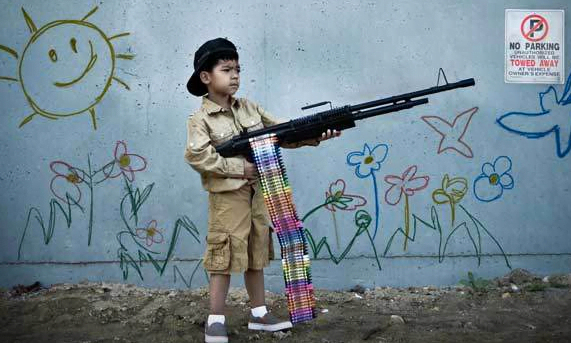Later today, negotiators at the United Nations are set to finalize a draft Arms Trade Treaty. The draft will be sent to national capitols for final approval and chances are the Arms Trade Treaty will be agreed upon by UN member states by the end of the week.
(Obligatory aside for Americans concerned about their second amendment rights: THIS TREATY HAS NOTHING TO DO WITH AMERICAN GUN LAWS. The treaty explicitly excludes domestic arms sales, and re-affirms “the sovereign right and responsibility of any State to regulate and control conventional arms exclusively within its territory, pursuant to its own legal or constitutional systems.” The treaty only covers the legal international sale or transfer of tanks, fighter jets, attack helicopters, small arms, ammunition and the like.)
There is a lot to like about this treaty. At it’s core, the treaty creates an international standard against exporting arms when there is reasonable belief that the arms may be used to commit war crimes or terrorism. Member states that are party to the ATT must report on their arms exports and imports to a UN body to verify that they are in compliance. Like all UN treaties, the enforcement happens at the national level; so, this treaty is really just an international agreement to create and enforce national laws against exporting arms when those arms may end up in the hands of child soldiers, terrorists, and war criminals.
The treaty is not perfect. One of the enduring features of international treaty negotiations is that achieving universal consensus on a text means that some of the stronger provisions are jettisoned. Achieving consensus–rather than putting something up for a vote — is important in these kinds of negotiations because in the end it is each individual state that must enact the treaties provisions. States would not enact a treaty it does not agree with, so achieving as broad a consensus as possible is a political necessity. As a consequence, parts of the treaty that are deemed controversial tend to be scrapped. These negotiations are very much a race to the lowest common denominator to which all states can agree.
Oxfam, which has been pushing hard for a highly inclusive ATT, is accordingly upset with some of the provisions that have been watered down. For example, they criticize a deeply problematic loophole in the text which exempts arms transfers made as part of bilateral defense agreements. You can see a whole list of Oxfam’s worthwhile reccomendations to strenghten the ATT.
Another challenge to the ATT is that the US Senate will probably never ratify it–at least not anytime soon. The USA is by far the biggest arms exporter in the world, but American politics are not necessarily ready for this treaty.
Despite these weaknesses, the treaty is a step forward. For the first time, arms exporters will have to certify that weapons will not be used in the commission of war crimes. This most basic provision can create new norms, expectations and responsibilities among the world’s largest exporters and help strengthen safeguards against the illicit use of weapons among importers. That includes the USA; the ATT creates universal standards that can help shape and inform American policy despite Washington’s formal exclusion from the treaty.
It may come as a surprise, but there are no laws on the books prohibiting the sale of arms to people who want to use those arms to commit genocide. In fact, there are more international agreements on the export of bannans than of arms. This treaty is the first time that the international community is formally agreeing to the basic premise that guns, fighter jets and bombs sold internationally should not be used to commit war crimes. Creating a formal mechanism by which countries agree that basic premise is a big step forward for humanity.
